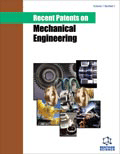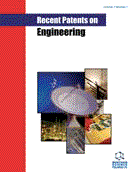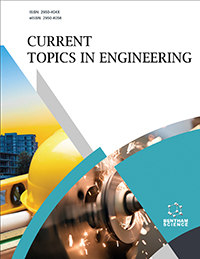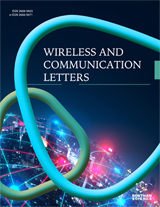Abstract
Background: This work presents a review of international patents dealing with the measurement of the induced fatigue of electrical stimulators. Sometimes muscles cannot move or have limited movement because of an injury such as Spinal Cord Injury and are in need of therapy. A complement of such therapy is Electrical Stimulation. A device sends electrical pulses to the muscle in order to generate contractions. Such contractions also fatigue the muscle and can be detrimental if muscle fatigue is not considered as a measurable variable in such devices. The scientific community has made progress regarding this issue however, the literature lacks a review of international patents. Since patents are in the forefront of technological innovation, the current status of the international patents dealing with the measurement of induced muscle fatigue of these devices is addressed.
Objective: Identify data related to international patents involving Electrostimulators and their use for reducing muscle fatigue.
Methods: A search for international patents was conducted to evaluate Electrostimulators capable of measuring induced fatigue. Specialized databases for patents were consulted using the term “Electrostimulator” associated with “Muscle Fatigue”. Such databases are Patentscope (WIPO), USPTO, Google Patents and Espacenet.
Results: A total of 245 international patents were found, of which 31 met the inclusion criteria. Out of the 31 patents, 15 were granted to a University, 13 to companies and 3 to individuals.
Conclusion: Almost all the patents granted to a University have detailed information on how to reproduce them and can be used to develop new technology to address the issue with the induced muscle fatigue that electrical stimulation produces during therapy. Patents filed by companies have ambiguous details on how to reproduce them but some have information that in conjunction with the ones granted to universities, can be complemented. Patents in this area are scarce, which present an opportunity for organizations and individuals alike to further the knowledge in this area.
Keywords: Electrostimulator, Functional Electrical Stimulation (FES), muscle fatigue, Neuromuscular Electrical Stimulation (NMES), Transcutaneous Electronic Nerve Stimulation (TENS).
Recent Patents on Mechanical Engineering
Title:Electrostimulators and Muscle Fatigue: A Patent Review
Volume: 14 Issue: 3
Author(s): Mario A. Camarillo-Ramos, Roberto L. Avitia*, Marco A. Reyna-Carranza and Conrado García-González
Affiliation:
- Department of Bioengineering, Faculty of Engineering, University of Baja California (UABC), Mexicali,Mexico
Keywords: Electrostimulator, Functional Electrical Stimulation (FES), muscle fatigue, Neuromuscular Electrical Stimulation (NMES), Transcutaneous Electronic Nerve Stimulation (TENS).
Abstract:
Background: This work presents a review of international patents dealing with the measurement of the induced fatigue of electrical stimulators. Sometimes muscles cannot move or have limited movement because of an injury such as Spinal Cord Injury and are in need of therapy. A complement of such therapy is Electrical Stimulation. A device sends electrical pulses to the muscle in order to generate contractions. Such contractions also fatigue the muscle and can be detrimental if muscle fatigue is not considered as a measurable variable in such devices. The scientific community has made progress regarding this issue however, the literature lacks a review of international patents. Since patents are in the forefront of technological innovation, the current status of the international patents dealing with the measurement of induced muscle fatigue of these devices is addressed.
Objective: Identify data related to international patents involving Electrostimulators and their use for reducing muscle fatigue.
Methods: A search for international patents was conducted to evaluate Electrostimulators capable of measuring induced fatigue. Specialized databases for patents were consulted using the term “Electrostimulator” associated with “Muscle Fatigue”. Such databases are Patentscope (WIPO), USPTO, Google Patents and Espacenet.
Results: A total of 245 international patents were found, of which 31 met the inclusion criteria. Out of the 31 patents, 15 were granted to a University, 13 to companies and 3 to individuals.
Conclusion: Almost all the patents granted to a University have detailed information on how to reproduce them and can be used to develop new technology to address the issue with the induced muscle fatigue that electrical stimulation produces during therapy. Patents filed by companies have ambiguous details on how to reproduce them but some have information that in conjunction with the ones granted to universities, can be complemented. Patents in this area are scarce, which present an opportunity for organizations and individuals alike to further the knowledge in this area.
Export Options
About this article
Cite this article as:
Camarillo-Ramos A. Mario , Avitia L. Roberto*, Reyna-Carranza A. Marco and García-González Conrado , Electrostimulators and Muscle Fatigue: A Patent Review, Recent Patents on Mechanical Engineering 2021; 14 (3) . https://dx.doi.org/10.2174/2212797614666210129145924
| DOI https://dx.doi.org/10.2174/2212797614666210129145924 |
Print ISSN 2212-7976 |
| Publisher Name Bentham Science Publisher |
Online ISSN 1874-477X |
 142
142
- Author Guidelines
- Bentham Author Support Services (BASS)
- Graphical Abstracts
- Fabricating and Stating False Information
- Research Misconduct
- Post Publication Discussions and Corrections
- Publishing Ethics and Rectitude
- Increase Visibility of Your Article
- Archiving Policies
- Peer Review Workflow
- Order Your Article Before Print
- Promote Your Article
- Manuscript Transfer Facility
- Editorial Policies
- Allegations from Whistleblowers
- Announcements
Related Articles
-
Modulation of Aquaporins by Dietary Patterns and Plant Bioactive Compounds
Current Medicinal Chemistry Posttranslational Modifications of Tau - Role in Human Tauopathies and Modeling in Transgenic Animals
Current Drug Targets Mesenchymal Stem Cells: Use in Cartilage Repair
Current Rheumatology Reviews Nanocapsulated Ascorbic Acid in Combating Cerebral Ischemia Reperfusion- Induced Oxidative Injury in Rat Brain
Current Alzheimer Research Polypeptide Toxins from Animal Venoms
Recent Patents on DNA & Gene Sequences Aggressive Antioxidant Reductive Stress Impairs Brain Endothelial Cell Angiogenesis and Blood Brain Barrier Function
Current Neurovascular Research Mast Cell – Glia Dialogue in Chronic Pain and Neuropathic Pain: Blood-Brain Barrier Implications
CNS & Neurological Disorders - Drug Targets Extra-Hematopoietic Effects of Erythropoietin
Cardiovascular & Hematological Disorders-Drug Targets Dopamine Receptor Pharmacology: Interactions with Serotonin Receptors and Significance for the Aetiology and Treatment of Schizophrenia
CNS & Neurological Disorders - Drug Targets Cannabinoid System in Neurodegeneration: New Perspectives in Alzheimers Disease
Mini-Reviews in Medicinal Chemistry Cytomegalovirus Infections in Non-Immunocompromised and Immunocompromised Patients in the Intensive Care Unit
Infectious Disorders - Drug Targets Recent Patents Concerning Modulators of Protein Kinase C
Recent Patents on DNA & Gene Sequences The Neurobiological Bases for Development of Pharmacological Treatments of Aggressive Disorders
Current Neuropharmacology Cannabinoids as Analgesic Agents: Evidence from In Vivo Studies
Current Neuropharmacology Brachial Plexopathy as a Complication of Radiotherapy: A Systematic Review
Current Cancer Therapy Reviews Imaging Characteristics of Spondyloarthropathy
Current Rheumatology Reviews Chemokines and Their Receptors: Potential Therapeutic Targets for Bone Cancer Pain
Current Pharmaceutical Design Editorial [Hot Topic: An Update on Neurotrophins (Guest Editor: Celia Duarte Cruz)]
Current Neuropharmacology Glycine/NMDA Receptor Antagonists as Potential CNS Therapeutic Agents: ACEA-1021 and Related Compounds
Current Topics in Medicinal Chemistry Neuroprotective Actions of Flavones and Flavonols: Mechanisms and Relationship to Flavonoid Structural Features
Central Nervous System Agents in Medicinal Chemistry
























